4 Famous Landmarks in Rome with Their Impressive Ratings on Google Reviews
With a history spanning more than 2,000 years, Rome presents a breathtaking visual experience and is abundant in cultural and historical treasures. From the Colosseum, an ancient amphitheater constructed between 70-80 AD, to Castel Sant'Angelo and the Sistine Chapel, you will uncover significant landmarks, each boasting an impressive 4.8 rating on Google Reviews.
DESTINATION GUIDE
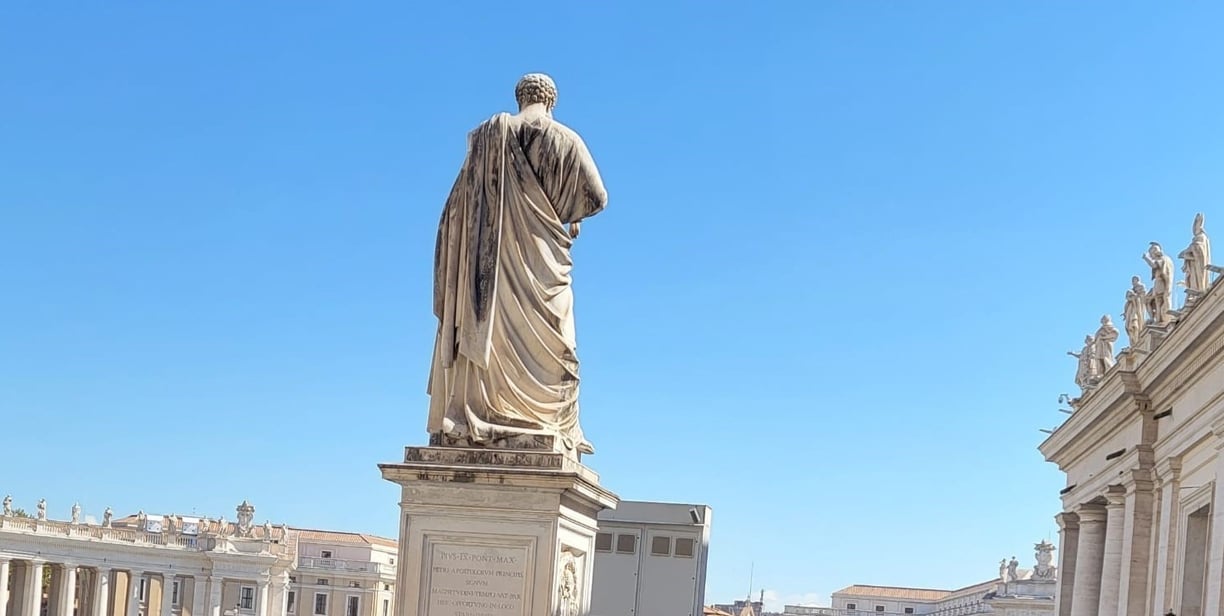

Saint Peter's Basilica
Among the more than 1,800 basilicas worldwide, Saint Peter's Basilica stands out as the largest church globally, boasting an interior space of 15,160 square meters and soaring to a height of 137 meters. This masterpiece of the Italian High Renaissance was initiated on April 18, 1506, and involved several renowned architects, including Bernini, who designed the magnificent Baldachin, and Michelangelo, creator of the iconic Pietà. Although the basilica's construction was finalized on November 18, 1626, it wasn't until 1980 that UNESCO recognized Saint Peter's Basilica as a World Heritage Site with its remarkable architecture and significance as a historical center of Christianity. As of now, Saint Peter's Basilica has garnered 163,890 reviews on Google, achieving an impressive rating of 4.8.
Entry to St. Peter's Basilica is free for all visitors. However, there may be a queue for security checks, and certain areas like the dome or the Vatican Grottoes may require a ticket or additional fee. Inside St. Peter's Basilica, you will find some amazing sights such as the Tomb of St. Peter, the iconic Dome, Bernini's Baldacchino, and so much more. By using the elevator, you can access the beautiful Saint Peter's Dome with its magnificent mosaics by Michelangelo Buonarroti. Apart from the stunning dome, you can also step into The Treasury Museum to admire a collection of priceless treasures of Saint Peter. Don't miss out on taking part in the "city of the dead" tour, also known as the "necropolis" tour, to rediscover the ground in an almost unchanged form after more than 1,600 years. In an untouched site for sixteen centuries beneath the floor of the Constantinian basilica with massive Renaissance structures, visitors also rediscover the roots of the Roman Church, which sprang from this land watered by the blood of the Holy Protomartyrs. Here, Saint Peter was crucified and buried, and here the Pope still resides today, continuing his mission as shepherd of the universal Church.
St. Peter's Basilica is situated at Piazza San Pietro, 00120 Città del Vaticano, Vatican City. The easiest way to get to St. Peter's Basilica are by metro, bus, or a mix of train and walking. Head to the Ottaviano Metro Stop, which is the nearest metro station to St. Peter's Basilica. From the metro exit, it's just a quick 10-minute stroll to the entrance of the Basilica. Additionally, there is a tram service available. You can take Tram 19, which stops at Piazza del Risorgimento. A brisk 13-minute walk from there will lead you to the entrance of the Basilica. Alternatively, you can take a bus to the Basilica; Bus numbers 32, 81, and 982 all stop at Piazza del Risorgimento, which is only a 10-minute walk from St. Peter's Basilica.
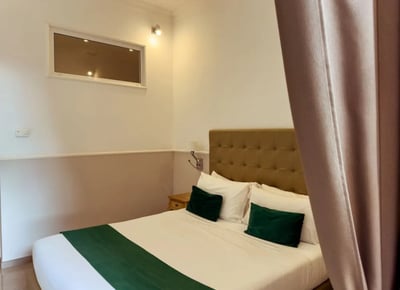

Vaticano Luxury Guest House is a super rated 2-star hotel, located 2 km from the city center. Places nearby within 1 km are Castel Sant'Angelo, St. Peter's Basilica, Passetto di Borgo, Sistine Chapel and Vatican Museums. Find more other super rated 2-star hotels near Saint Peter's Basilica.
Budget-Friendly Hotels near Saint Peter's Basilica
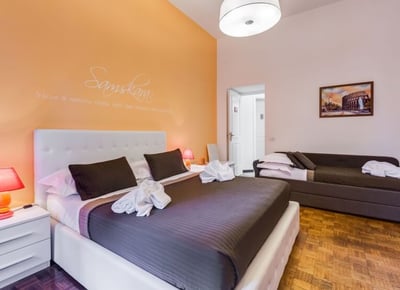

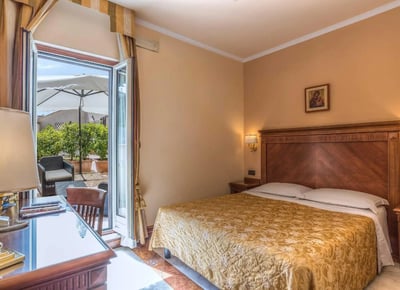

Allegra's House is a super rated 3-star hotel, located 2.7 km from the city center. Places nearby within 1 km are Sistine Chapel, Vatican Museums, St. Peter's Basilica, Santa Maria in Traspontina, Castel Sant'Angelo and Ponte Sant'Angelo.. Find more other super rated 3-star hotels Saint Peter's Basilica.
Tmark Hotel Vaticano is a super rated 4-star hotel, located 2.9 km from the city center. Places nearby within 1 km are Sistine Chapel, Vatican Museums, St. Peter's Basilica and Santa Maria in Traspontina. Find more other super rated 4-star hotels Saint Peter's Basilica.
Basilica of Saint Paul Outside the Walls
The Basilica of Saint Paul was constructed by the Roman Emperor Constantine I in 313, following his declaration of freedom of worship in Rome, which put an end to the persecution of Christians. Initially a modest basilica, it was erected over the tomb of Paul, oriented towards Jerusalem, and was consecrated by Pope Sylvester in 324. As the number of pilgrims surged, the necessity to enlarge the building's capacity became evident, and since relocating the tomb was not an option, Emperor Theodosius I, along with Valentinian II and Arcadius, initiated the construction of a significantly larger basilica in 386. This more magnificent structure, featuring a nave, four aisles, and transepts, was consecrated by Pope Siricius in 390. The elaborate project, which included stunning mosaics, was not finalized until the papacy of Leo I from 440 to 461. By the 5th century, the Basilica of Saint Paul had surpassed the Old St. Peter's Basilica in size. Following the 5th century, the Basilica of Saint Paul experienced two major restorations. The first restoration was necessitated by the roof's collapse during an earthquake in 801. Although the roof fell, Pope Leo III managed to rebuild the basilica, restoring it from the marble floor all the way to the roof. The second restoration was conducted by Luigi Poletti after a devastating fire struck the basilica in 1823.
Emulating the design and proportions of the Theodosian basilica, Luigi Poletti reconstructed the stunning interior that guests admire today. This includes the nave and the adjacent double aisles, which are divided by four rows of twenty Montòrfano granite columns. Additionally, there is a wooden model of the basilica created in 1844 that, upon detailed examination, showcases elements not present in the actual structure. The Basilica of Saint Paul boasts the Quadriportico, a grand architectural feature distinguished by four side porches designed by Guglielmo Calderini, with dimensions of 70 m by 70 m. The interior features a coffered ceiling adorned with gold and displaying the coat of arms of Pope Pius IX, along with images of Jesus' apostles in the wall niches, and forty original frescoes dating from the fifth to ninth centuries that remain intact. As of now, the Basilica of Saint Paul Outside the Walls has garnered 16,589 reviews on Google, achieving an impressive score of 4.8.
The Basilica of Saint Paul is home to the Holy Door, which opens exclusively during the Jubilee Year. At the base of the door, there is a Latin inscription that reads, "Ad sacram Pauli cunctis venientibus aedem – sit pacis donum perpetuoque salus," illustrating scenes from the lives of Christ and the apostles. Inside, you will find another door, referred to as the Byzantine Door. This door, which predates the 19th century, features 56 small, rectangular bronze panels that are believed to have been cast in Constantinople. Unlike the Central Door, which is crafted from bronze and weighs around 8 tons, the Holy Door was designed by Antonio Maraini in 1931. Visitors can also appreciate the painting "Quo vadis Domine," depicting a moment from the lives of Peter and Paul. Admission to the Basilica of Saint Paul Outside the Walls is complimentary for all guests. However, there are charges for accessing the cloister and the art gallery. To get to the Basilica of Saint Paul Outside the Walls, you can take Bus line 23, which stops right in front of the basilica, or opt for Metro Line B.
Altare della Patria
Located in the center of the Vittoriano, the Altare della Patria, also known as The Altar of the Fatherland, serves primarily as an altar dedicated to the goddess Roma and subsequently as a memorial for the Italian Unknown Soldier. Crafted by Giuseppe Sacconi and embellished by sculptor Angelo Zanelli, the Altare Della Patria is a vital component of the Vittoriano, a prominent monument honoring King Victor Emmanuel II, who freed Italy from foreign rule and unified the nation. Positioned directly beneath the Vittoriano, the Altare Della Patria, adorned with detailed sculptures, was established as the Tomb of the Unknown Soldier in 1921. From an architectural perspective, the Vittoriano resembles an open-air gathering space, akin to an agora in Greek, featuring three distinct levels. This agora-like structure signifies the significance of Italian unification. Visually, the agora is interconnected by staircases that lead to a portico supported by a colonnade above, which contains the Central Museum of the Risorgimento.
The Central Museum of the Risorgimento is an essential destination for anyone wanting to learn about the Risorgimento, covering everything from the 18th century to the First World War, including diaries, statues, letters, relics, and weaponry. Be sure to take in the stunning 360° view of Rome from the panoramic terrace atop the Vittoriano. Visitors can access this terrace in just one minute via a glass elevator. The breathtaking elevator journey provides an extraordinary experience, showcasing direct views of the Colosseum and the silhouette of the Santa Maria in Aracoeli Basilica. As of now, the Altare della patria has garnered 2,427 Google reviews, boasting an impressive score of 4.8.
There are numerous highlights that you shouldn't overlook, including the Imperial Forums Wing, the Archaeology and Art History Library, and Palazzo Venezia, a grand 15th-century palace that transports you back to the glorious days of the Renaissance and Italy's renowned heritage. The Altare della Patria offers free access to the main monument area. However, there are charges for the glass elevator to the summit, entry to the Central Museum of the Risorgimento, and temporary exhibitions held within the monument. Once you arrive at the Colosseum, you can easily walk to the Altare della Patria. Additionally, several bus lines stop at Piazza Venezia.
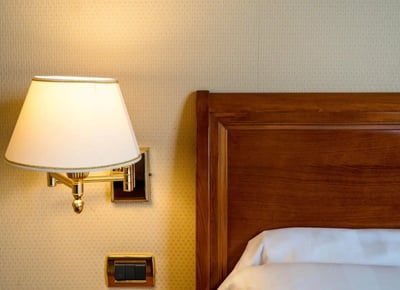

Hotel Oceania is a super rated 2-star hotel, located 1.4 km from the city center. Places nearby within 1 km are Villa Medici, Trevi Fountain, Santa Maria Maggiore, Museum of Contemporary Art of Rome and Altare della Patria. Find more other super rated 2-star hotels near Altare Della Patria.
Budget-Friendly Hotels near Altare della Patria
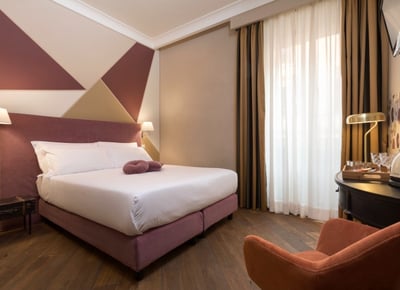

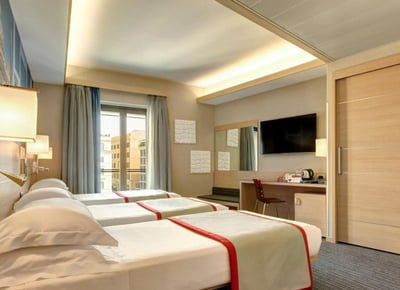

Boutique Hotel Galatea is a super rated 3-star hotel, located 1 km from the city center. Places nearby within 1 km are Santa Maria Maggiore, Trevi Fountain, Altare della Patria, Piazza Venezia and Colosseum. Find more other super rated 3-star hotels near Altare Della Patria.
iQ Hotel Roma is a super rated 4-star hotel, located 1.3 km from the city center. Places nearby within 1 km are Santa Maria Maggiore, Trevi Fountain, Trajan's Forum, Capitoline Hill, Colosseum and Altare della Patria. Find more other super rated 4-star hotels near Altare Della Patria.
Basilica di Santa Maria Maggiore
The Basilica di Santa Maria Maggiore stands as one of the four principal basilicas in Rome, alongside the Archbasilica of Saint John Lateran, Saint Peter's Basilica, and the Basilica of Saint Paul Outside the Walls. Long before it was named the Basilica di Santa Maria Maggiore, with its construction commencing in the 5th century, the church was referred to as Saint Mary of the Crib. This name arose from the belief that the relics of Jesus Christ's nativity scene, specifically four sycamore wood tablets, were kept in a stunning silver and gold reliquary beneath its high altar. This magnificent ancient basilica, perched on the Esquiline Hill and built over a pagan temple dedicated to the goddess Cybele, is also famously known as Our Lady of the Snows. This title comes from the miraculous snowfall that occurred on the night of August 5, 352. Locals believe that the white snowfall on the Esquiline Hill during the summer was Mary's response to Pope Liberius' prayer for guidance, prompted by a Roman nobleman named Giovanni and his wife, who ultimately financed the church's construction, which was completed in 354. Seventy years later, Pope Sixtus III oversaw a larger reconstruction of the church, enhancing it with silver decorations and ornaments. Since that time, it has been recognized as the Basilica di Santa Maria Maggiore. As of the publication of this article, The Basilica di Santa Maria Maggiore has garnered 43,521 Google reviews, achieving an impressive score of 4.8.
As we near the Basilica of Santa Maria Maggiore, the first thing that catches our eye is the impressive 75-meter-high brick bell tower and dome, which hark back to the Baroque period. This bell tower holds the title of the tallest in Rome. The architectural ensemble is both compact and distinctly defined, showcasing a Neoclassical facade crafted by Ferdinando Fuga and completed in 1750. This Paleochristian basilica is notable for its triumphal arch motif, which beautifully frames mosaics by Filippo Rusuti, illustrating Christ seated with the saints beside him, as well as the miracle of the snow. Within the basilica, the Cipollino marble columns, remnants of pagan temples that were destroyed during the Christian era, still stand. The nave boasts a stunning marble floor and a Renaissance ceiling adorned with gilded woodwork by Giuliano and Antonio da Sangallo. Each column, painting, reliquary, statue, and marble floor is rich with historical importance and Christian spirituality.
The Basilica di Santa Maria Maggiore welcomes visitors every day from 7:00 a.m. to 8:00 p.m., and entry is free of charge. You can buy tickets for the Liberian Historical Museum, the Loggia delle Benedizioni, the Hall of Popes, Bernini's staircase, and the archaeological area at the reception desk. For more details, please check the official website of The Basilica di Santa Maria Maggiore. The Basilica is conveniently reachable by public transport, including bus or subway lines A or B to Termini station, which is just a short stroll away.
Conclusion
Saint Peter's Basilica, the Basilica of Saint Paul Outside the Walls, the Altare della patria, the Basilica di Santa Maria Maggiore, along with other notable landmarks around the globe, are extraordinary works that reflect local wisdom, celebrating and maintaining culture and knowledge. The longevity of these masterpieces, which play a crucial role in tourism, depends on the commitment to preserve and innovate while staying true to their original essence. Protecting cultural sites boosts the tourism attractiveness of an area.
